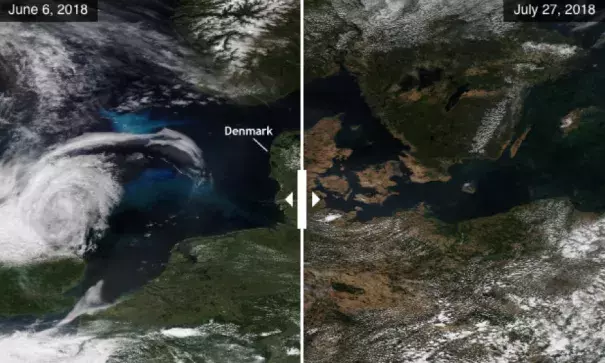A hot, dry summer has led to drought in Europe in 2018

Prolonged heat and dryness during the summer of 2018 has turned formerly green fields into dusty, dying patches of soil all across Europe, leading to drought across many countries.
...
A prolonged dry spell coupled with soaring, record-breaking temperatures has been a horrible combination for farms from Scandinavia and England in the north to France, Netherlands, and Germany to the south. In particular, July was incredibly hot for northern Europe.
Temperatures in late July exceeded 90°F as far north as the Arctic Circle! In Norway, the far northern city of Badufoss hit 92°F on July 17. The city normally sees fewer than 25 days a year with a high over 68°F. In neighboring Finland, the town of Kevo also reached 92°F. Finland as a whole set its all-time hottest July as well.
Farther south, the United Kingdom recorded its driest first half of summer on record and its third-hottest July on record, according to the UK Met office in a report from the World Meteorological Organization. Ireland observed heatwave conditions, defined here as at least five consecutive days above 77°F (for reference, peak summer temperatures in Ireland generally are around 68°F), and drought at all its main weather stations. France saw nighttime lows remain incredibly warm with more than 10 overnight lows exceeding 68°F when average overnight lows normally are around 60°F.
According to Weather Underground, Belgium saw all-time heat records in Antwerpen (99°F) and Gent (101°F). Germany similarly saw multiple cities set all-time heat records this summer. And a site in the city of Arcen in the Netherlands recorded one of the hottest temperatures in the country’s history when it hit 100.8°F on July 26.
Related Content



